Luglio 2019 – July 2019
Dopo avervi illustrato alcune bellezze paesaggistiche dell’isola di Maiorca, proseguirò il racconto della mia vacanza parlandovi della capitale Palma. Questa città è stata una vera sorpresa! Passeggiando per le strade piene di gente, negozi e caffetterie la sua atmosfera gioiosa mi ha subito conquistato, ma Palma non è solo questo. Le dominazioni e le correnti culturali che si sono succedute nel corso dei secoli hanno infatti lasciato la loro impronta nell’assetto della città, nella ricchezza e varietà degli stili architettonici, ed un fascino orientaleggiante che la rende così speciale. Cartina alla mano, iniziamo la visita!
After showing you some of the scenic beauties of the island of Mallorca, I will tell you now about the capital Palma. This city was truly a surprise! Strolling through the streets full of people, shops and cafés, its joyful atmosphere immediately won me over, but Palma is more than this. The dominations and cultural currents that have occurred over the centuries have in fact left their mark on the city planning, on the richness and variety of the architectural styles, and an oriental charm that makes it so special. Map in hand, let’s start the tour!
La Cattedrale di Santa Maria – detta La Seu – spicca da lontano e rappresenta un simbolo di Palma. Edificata dal re catalano Giacomo I sul sito di una moschea araba, in seguito alla conquista cristiana di Maiorca, essa domina il lungomare. Osservando uno scorcio di questo notevole esempio di architettura gotica, se ne percepiscono subito l’altezza – che rappresenta simbolicamente la vicinanza con il cielo e con Dio – e l’imponenza; numerosi elementi decorativi arricchiscono la facciata ed il portale di uno dei tre ingressi; il grande rosone in alto riflette i suoi colori all’interno per effetto dell’ingresso della luce – simbolo anch’essa di Dio.
St Mary’s Cathedral – called La Seu – stands out from afar and represents a symbol of Palma. Built by the Catalan king James I on the site of an Arab mosque, following the Christian conquest of Mallorca, it dominates the promenade. Observing a glimpse of this remarkable example of Gothic architecture, one immediately perceives its height – which symbolically represents its proximity to the sky and to God – and its grandeur; many decorative elements enrich the facade and the portal of one of the three entrances; the large rose window at the top reflects its colours inside due to the entry of light – also a symbol of God.
Il Palau de l’Almudaina – oggi residenza ufficiale della famiglia reale spagnola – era una residenza reale costruita su una antica fortezza araba; l’edificio è in stile gotico, ma comprende anche degli archi in stile moresco tipici dell’ architettura islamica.
The Palau de l’Almudaina – today the official residence of the Spanish royal family – was a royal residence built on an ancient Arab fortress; the building is in Gothic style, but it also includes Moorish-style arches typical of Islamic architecture.
Le guglie della cattedrale ed il Palau de l’Almudaina si specchiano in un laghetto artificiale situato nel Parc de la Mar sotto le mura dell’antica città; le numerose palme contribuiscono a dare un tocco esotico ed il vasto complesso architettonico, quando di sera è illuminato, offre senza dubbio un effetto suggestivo!
The spires of the cathedral and the Palau de l’Almudaina are reflected in an artificial lake located in the Parc de la Mar under the walls of the ancient city; many palm trees give it an exotic touch and the huge architectural complex, when it’s illuminated at night, definitely offers a charming effect!
Scendendo verso la costa dalla parte opposta della cattedrale questo grande murale rappresenta un dipinto di Joan Miró, uno degli artisti più influenti del XX secolo che a Palma visse e lavorò per un periodo, e che fu uno degli ideatori del Parc de la Mar. Con i suoi colori accesi e lo sfondo azzurro che richiama il mare è per me uno dei ricordi più piacevoli di questa città.
Going down towards the coast on the opposite side of the cathedral, this large mural represents a painting by Joan Miró, one of the most influential artists of the XX century who lived and worked in Palma for a period, and who was one of the creators of the Parc de la Mar. With its bright colours and the light blue background that recalls the sea it is for me one of the best memories of this city.
Vicino alla cattedrale sorgono gli antichi bagni arabi, un complesso termale presumibilmente del X secolo, una delle poche testimonianze della dominazione araba durata circa due secoli. Oggi rimane il tepidarium, una sala con la volta sorretta da colonne diverse tra loro. Il luogo non è molto grande ma l’atmosfera è speciale e fa sognare lo sfarzo ed il benessere che sicuramente lo caratterizzava un tempo, quando esso era, seguendo l’esempio delle terme romane, luogo di incontro e di piacere.
Near the cathedral there are the ancient Arab baths, a spa complex presumably of the X century, one of the few testimonies of the Arab domination, lasted about two centuries. Today the tepidarium is left, a room with a vault supported by columns different from each other. The place is not very large but the atmosphere is special and makes you dream of the splendour and well-being that certainly characterized it once upon a time, when it was, following the example of the Roman baths, a place of meeting and pleasure.
Finita la visita ci siamo rilassate nel giardino pieno di palme, cactus e fiori, cullate da una musica orientale.
After the visit we relaxed in the garden full of palm trees, cacti and flowers, lulled by oriental music.
Lungo la strada dalla cattedrale ai Bagni arabi si incontrano edifici dal tipico color pastello tenue caratterizzati dalle verande e dalle colonne nella parte superiore, che abbiamo poi ritrovato anche in molte altre strade della città vecchia.
Along the way from the cathedral to the Arab Baths, you will find buildings with a typical soft pastel colour characterized by verandas and columns in the upper part, which we also found in many other streets of the old city.
Una giornata non basta per visitare Palma e noi ci siamo tornate, sia per vedere il resto della città vecchia, sia perchè è molto invitante per lo shopping e noi ne abbiamo volentieri approfittato! Dalla cattedrale siamo salite a Plaça de Cort dove sorge il Municipio barocco – Ajuntament.
One day is not enough to visit Palma, and we went back there to see the rest of the old town, as well as because it is very inviting for shopping and we gladly took advantage of it! From the cathedral we went up to Plaça de Cort where the baroque Town Hall – Ajuntament – stands.
In Plaça de Cort vi è anche un ulivo centenario, si trova in un angolo della piazza ma è impossibile non notarlo per la sua grandezza!
In Plaça de Cort there is also a centenary olive tree, it is located in a corner of the square but you can’t miss it because of its size!
Da Plaça de Cort abbiamo proseguito verso nord, e giunte in Plaça del Marquez ci siamo fermate stupite dinnanzi a Can Forteza Rey e l’adiacente El Aguila: questi edifici modernisti dell’inizio del XX secolo si ispirano allo stile dell’architetto catalano Gaudì, il quale contribuì all’espansione di questa corrente artistica in Europa. Essi si distinguono così riccamente adornati di colonne e ringhiere in ferro ondulato ai balconi; la parte superiore della facciata di Can Forteza Rey poi con le numerose ceramiche policrome sembra un mosaico. Anche il bovindo nell’angolo sinistro conferisce movimento alla struttura.
From Plaça de Cort we continued north, and arrived in Plaça del Marquez we stopped amazed in front of Can Forteza Rey and the adjacent El Aguila: these modernist buildings of the early twentieth century are inspired by the style of the Catalan architect Gaudi, who contributed to the expansion of this artistic current in Europe. They stand out so richly adorned with columns and undulating iron railings of the balconies; the upper part of the facade of Can Forteza Rey with its many polychrome ceramics, looks like a mosaic. The bay window in the left corner then gives movement to the building, too.
Abbiamo proseguito fino a Plaça Major e via Sant Miquel, quindi tornando indietro siamo scese lungo il viale alberato chiamato Rambla. Giunte nella Plaça del Mercat abbiamo ritrovato le linee sinuose dello stile modernista in Can Casasyas e la Pension Menorquina. Queste due costruzioni simmetriche presentano un effetto molto bello prodotto, soprattutto nella parte inferiore, dalle colonne dritte in contrasto con le strutture ad arco sopra alle finestre e le linee curve delle finiture dei balconi.
We went up to Plaça Major and via Sant Miquel, then we went back down the tree-lined avenue called Rambla. Once in the Plaça del Mercat we found again the sinuous lines of the modernist style in Can Casasyas and the Pension Menorquina.. These two symmetrical buildings present a very beautiful effect produced, especially in the lower part, by the straight columns in contrast with the arched structures above the windows and the curved lines of the balcony finishing.
Non poteva mancare l’occasione di assaggiare del cibo tipico locale, così, durante una sosta per riposarci e rifocillarci in una caffetteria del centro, abbiamo mangiato queste buone ensaimadas, i dolci tipici di Maiorca, soffici brioches dalla forma di chiocciola ricoperte di glassa o farcite con crema o panna. Se vi piacciono potete farvele confezionare in apposite scatole e portarle a casa come souvenir gastronomico…
We couldn’t miss the chance to taste some typical local food, so, we stopped for a refreshing break in a café in the city centre: we had tthese good ensaimadas, the typical Mallorcan sweets, soft snail-shaped brioches covered with icing or stuffed with cream or whipped cream. If you like them, you can have them packaged in special boxes and take them home as a gastronomic souvenir …
…altrimenti potete acquistare le ghirlande di peperoncini nei supermercati o nei negozi di alimentari.
… otherwise you can buy chilli garlands in supermarkets or grocery stores.
Maiorca è una meta di vacanze molto gettonata per la movida notturna ed alla sera Palma è decisamente animata! Il Paseo Maritimo è la zona ideale per gli amanti delle discoteche e delle ore piccole…noi abbiamo optato per qualcosa di più soft e qualche sera andavamo a passeggiare tra i vicoli ed i numerosi locali caratteristici della Llotja: questo quartiere molto tranquillo e d’atmosfera prende il nome dall’edificio tardogotico – un tempo sede della Borsa – che si affaccia sulla piazza gremita di gente seduta a tavolino. Proprio qui siamo venute l’ultima sera per brindare con un bicchiere di Sangria alla nostra bella vacanza…non era un addio, ma sicuramente un arrivederci al più presto su questa bella isola!
Mallorca is a very popular holiday destination for its nightlife and in the evening Palma is very lively! The Paseo Maritimo is the ideal area for those who love discos and to stay up very late … we opted for something softer and some evenings we went for a walk through the lanes and the many typical bars and clubs in Llotja: this very quiet and atmospheric area takes its name from the late Gothic building – once the seat of the Stock Exchange – which overlooks the square crowded with people sitting at a table. Right here we came on the last evening to toast our beautiful holiday with a glass of Sangria…it wasn’t goodbye, but surely see you soon on this beautiful island!
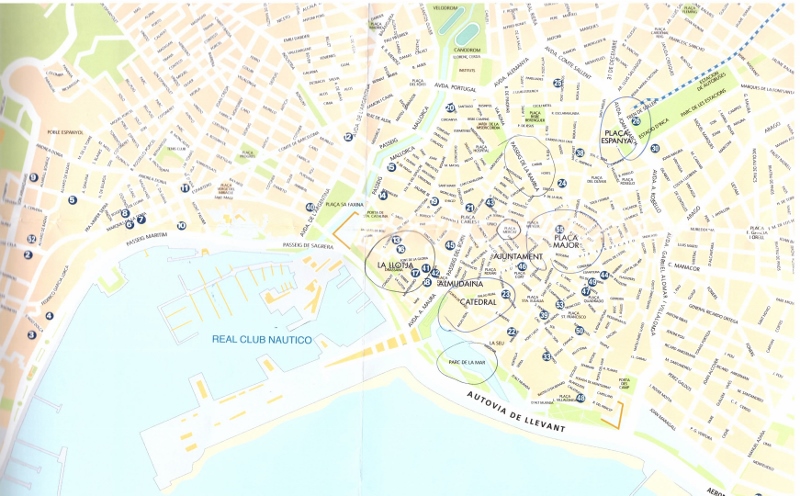
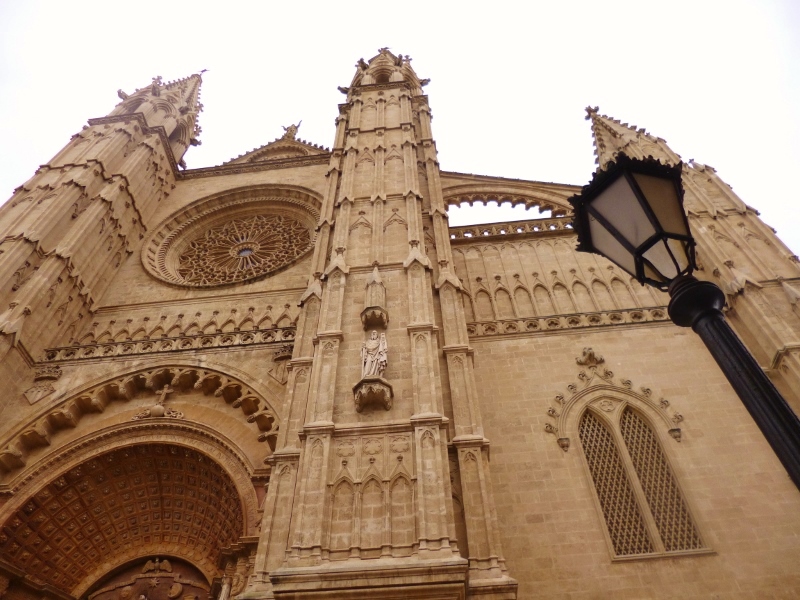
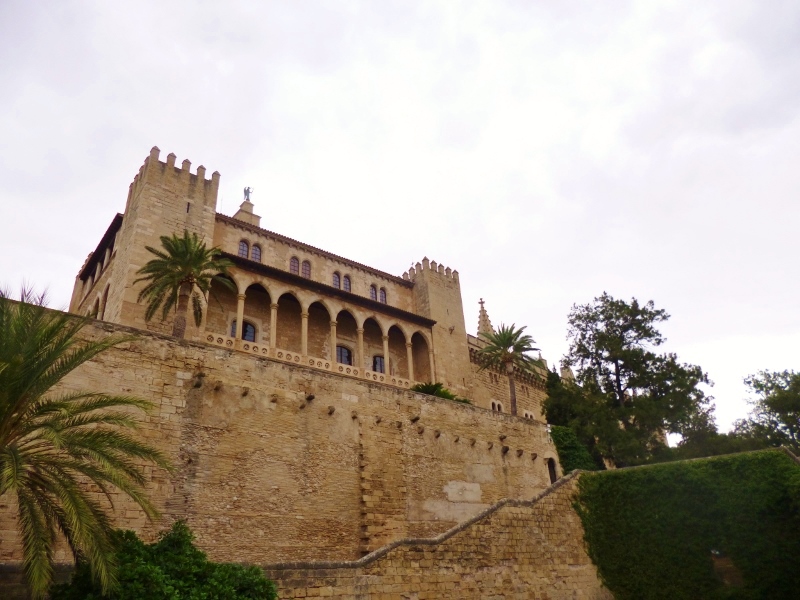
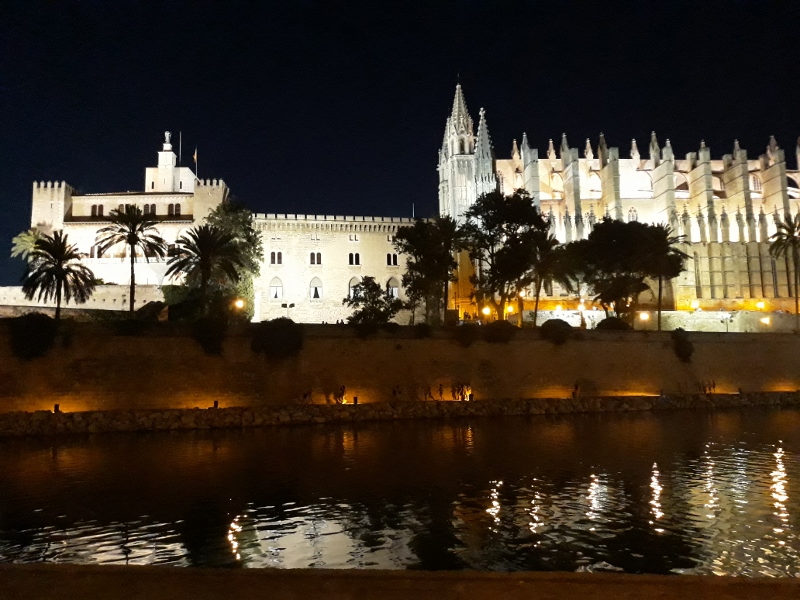
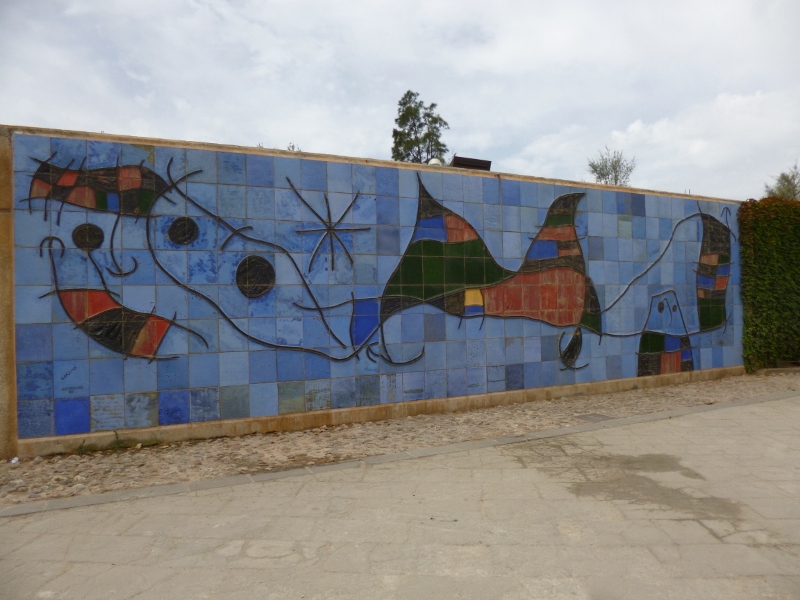

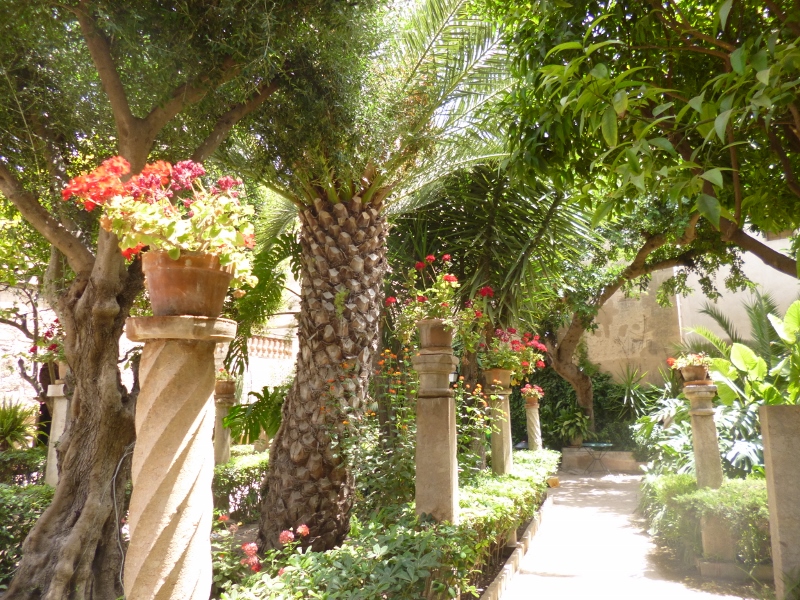
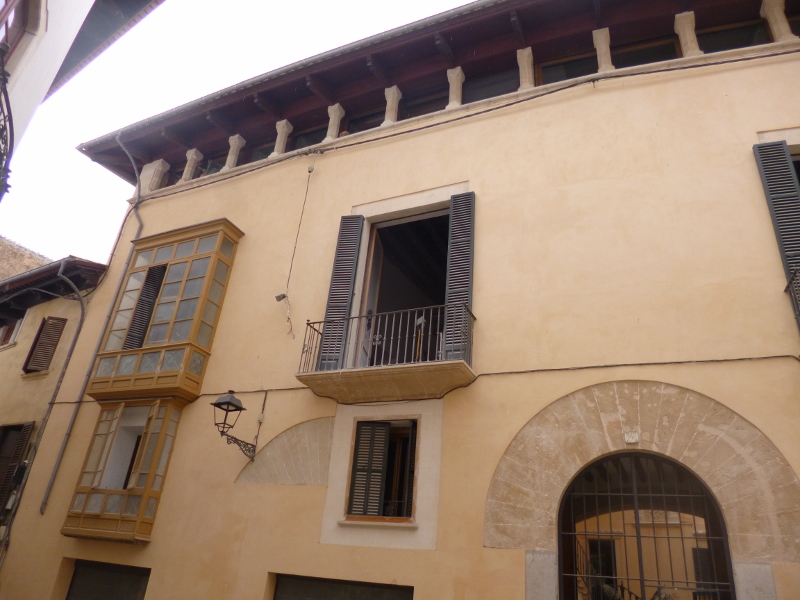
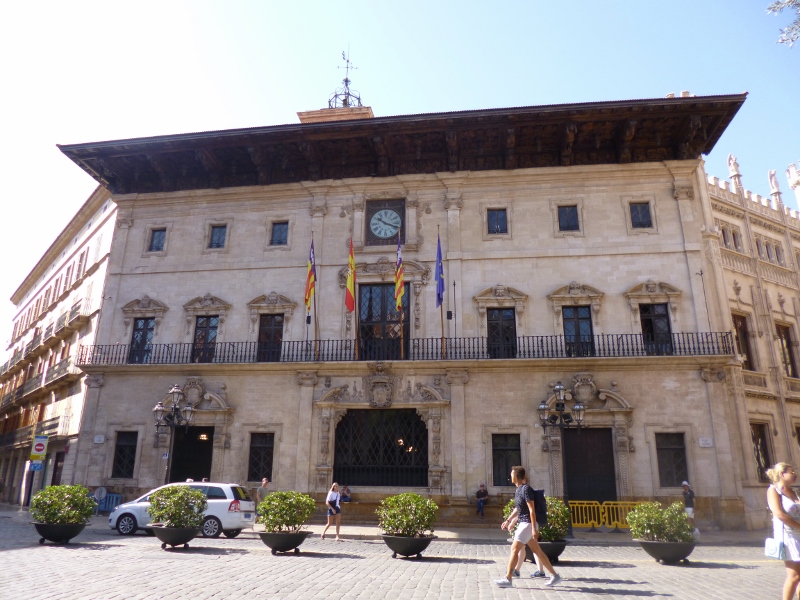
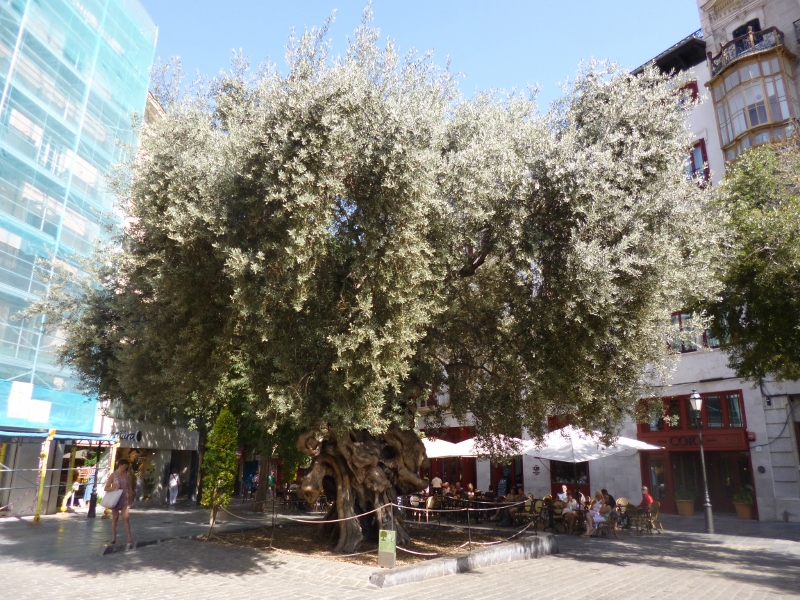
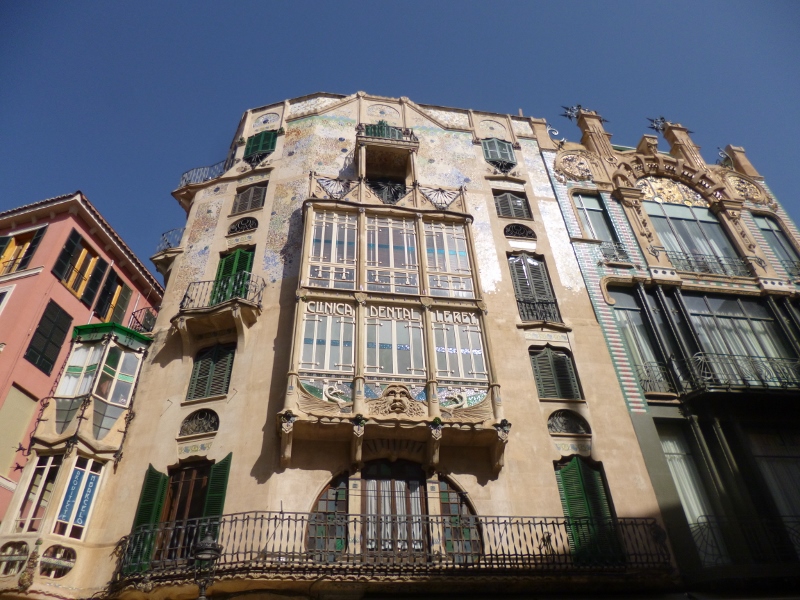
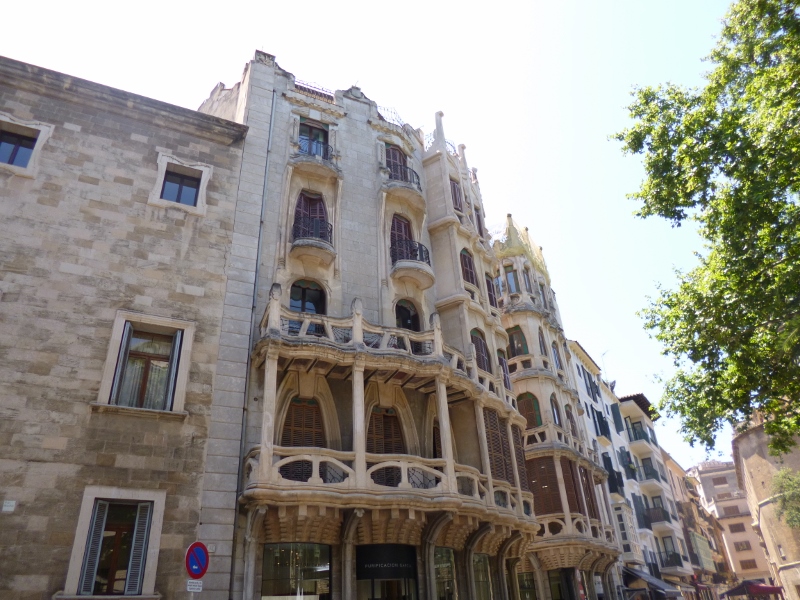
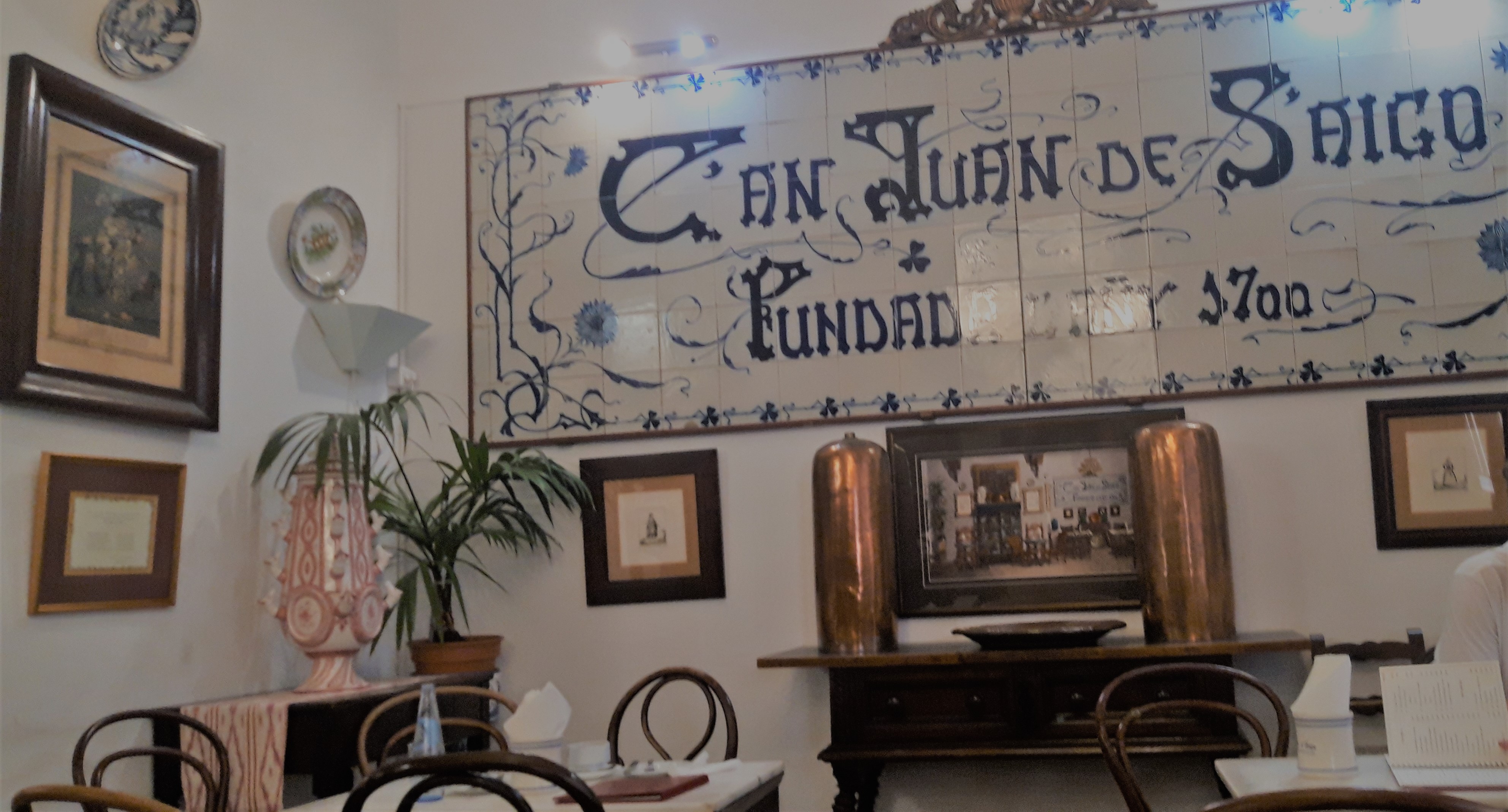
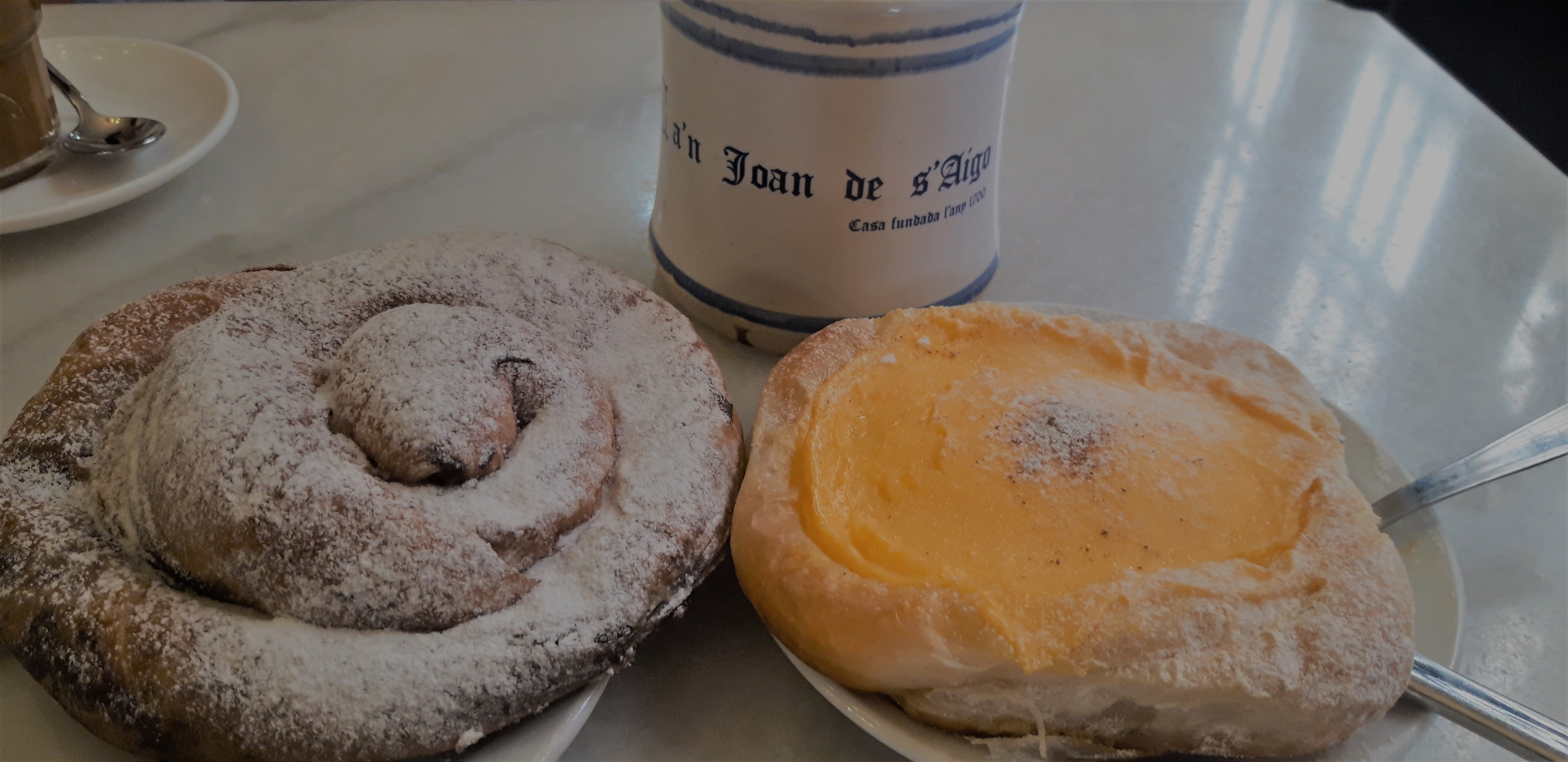
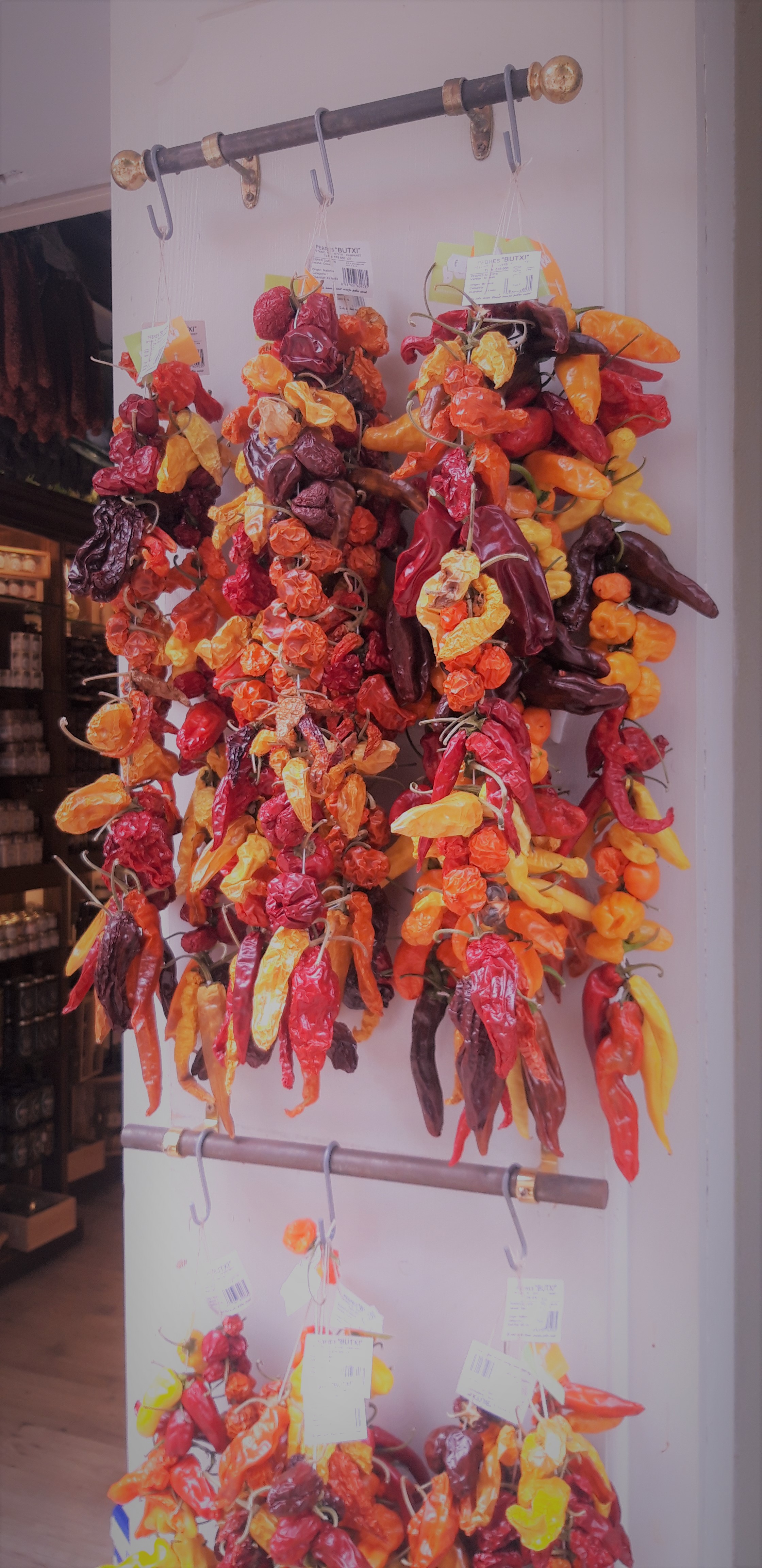
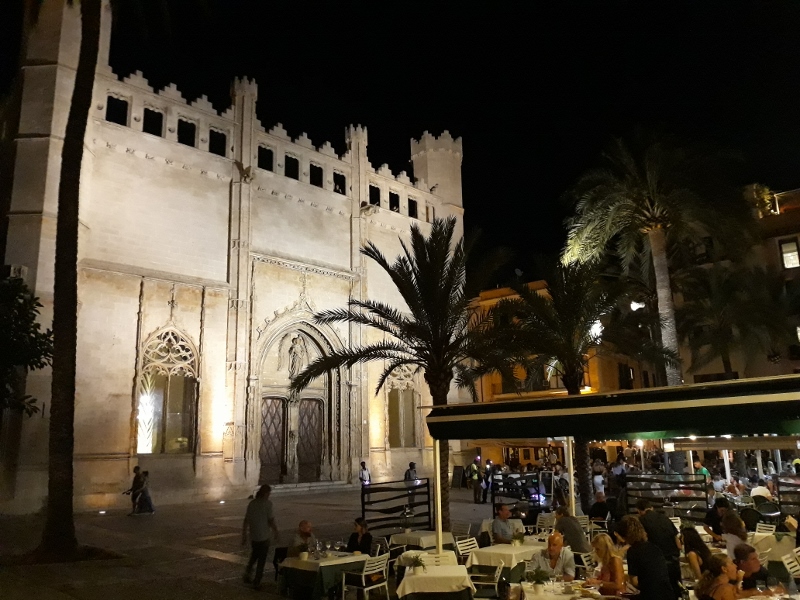
Indubbiamente una meta eclettica, che offre sia svago che momenti di cultura e storia. Ma anche la gastronomia locale a quanto pare è degna di nota! sarei curiosissima di assaggiare le ensaimadas, sembrano davvero allettanti.
Infatti io prediligo mete di questo genere che offrano un po’ di tutto! Le ensaimadas non solo sono buone ma anche supercaloriche!
Certo che Vamos a Mallorca!
Un isola carinissima e piacevole, dove si ritorna sempre molto volentieri
Infatti spero di tornarci perchè ci sono ancora diversi luoghi che mi piacerebbe scoprire di quest’isola.
Bella Palma! L’unico neo dell’isola è proprio (era, sarebbe meglio dire) il suo affollamento estivo. Turismo un po’ così… Detto questo, mi hai ricordato le atmosfere spagnole che tanto amo. Chissà se tornerò sull’isola :)
Eh sì, amo anch’io l’atmosfera spagnola festosa! Fortunatamente la zona dove alloggiavo io era animata ma di un turismo tranquillo…ho appositamente tralasciato le zone più “turbolente”!
Ho un ricordo molto vago di Palma, ci sono stata con i miei genitori quando avevo 6 anni. Ricordo però bene il murale di Mirò!
Con i suoi colori accesi e lo sfondo azzurro che richiama il mare è rimasto tra i ricordi più piacevoli per me di questa città!
Ho un ricordo molto lontano di questa città piena di sorprese. Sicuramente mi ricordo l’architettura ispirata a Gaudì in moltissime costruzioni. Mi ricordo, invece, molto meglio il suo cibo! È passato molto tempo: i monumenti vanno e vengono, ma la buona cucina resta impressa nella mente!
Sono perfettamente d’accordo con te! Il cibo è uno degli aspetti di un viaggio che rimangono sempre nei miei ricordi!
Ci sono stata tantissimi anni fa ed ero piccola quindi ricordo poco ma il tuo articolo ha fatto riafforare in me qualche immagine nitida: Palma è una splendida cittadina dai tratti anche arabeggianti e molto allegra, merita una visita!
Sì, una delle città più belle che abbia mai visto proprio grazie ai suoi tratti orientaleggianti.